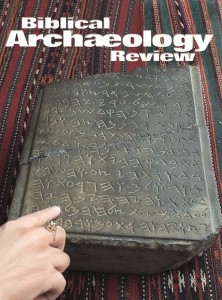Ashyahu: He’s Josiah
Sidebar to: The “Three Shekels” and “Widow’s Plea” Ostraca: Real or Fake?
Who is Ashyahu, the king mentioned on the “Three Shekels” ostracon? There is no monarch with that name in the Bible, either as ruler of the southern kingdom of Judah or as ruler of the northern kingdom of Israel. Some scholars have suggested that the name Ashyahu is a form of the name Yoash or Yehoash—the three forms combine two elements, ash, meaning “has given,” and yah, a shortened form of the Israelite God Yahweh (scholars call the name of the deity in a person’s name the theophoric element). All three names mean “God has given.” Ashyahu, these scholars suggest, simply switches the two elements found in Yoash and Yehoash—a common phenomenon in ancient Israelite names.
We know of two Biblical kings named Yoash or Yehoash (usually spelled Johash and Jehoash in English Bibles). Yehoash—the same king who is supposedly mentioned in the controversial inscription discussed in this issue—ruled Judah about 835–801 B.C.E., and Yoash ruled Israel about 802–787 B.C.E. If the Ashyahu of the ostracon is one of these two kings, then the ostracon dates to the late ninth or early eighth century B.C.E. But I believe Ashyahu actually refers to a later—and more important—Biblical king: Josiah.
That Ashyahu may be Josiah was raised as a third possibility in the original
Already a library member? Log in here.
Institution user? Log in with your IP address.

